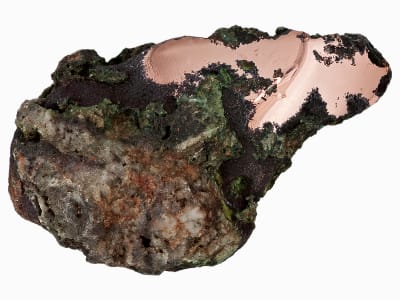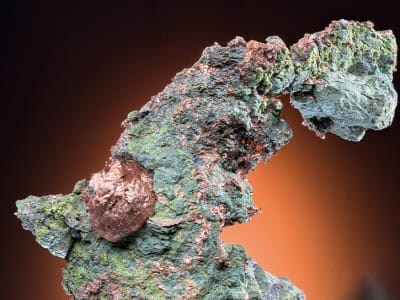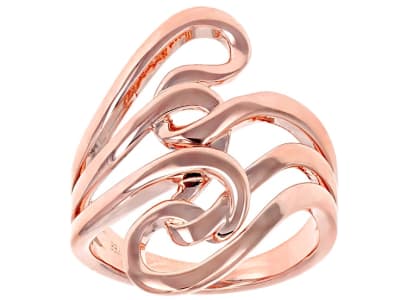Copper is a native element and number 29 on the periodic table. Many minerals like azurite, malachite and chrysocolla are copper ores and the copper can be extracted for use in various products. Most copper is mined for electrical purposes but is also used as an alloy in brass, bronze, and with precious metals in jewelry and decorative items. The name copper comes from aes сyprium which translates to metal of Cyprus. Copper was mined on the island of Cyprus during the Roman era. The later Latin name сuprum is the origin of modern name. Most copper is mined in Chile, China, Peru, The United States, Canada, and Zambia. Remarkable copper specimens come from the Upper peninsula of Michigan, Arizona, New Mexico, Kazakhstan, and Namibia.
General Information
LWUV: none
Copper Ore Colors
-
 Green
Green -
 Orange
Orange
Countries of Origin
Papua New Guinea; Angola; Cambodia; Virgin Islands (British); Sudan; Kazakhstan; Portugal; Greece; Latvia; Mongolia; Morocco; Unknown; Mali; Panama; Guatemala; Guyana; Iraq; Chile; Nepal; Argentina; Isle of Man; Ukraine; Zambia; Congo; India; Canada; Turkey; Belgium; Namibia; Faroe Islands; Finland; South Africa; Georgia; Jamaica; Peru; Germany; Tanzania, United Republic Of; Eritrea; Fiji; Viet Nam; Guinea; Somalia; Madagascar; United Kingdom of Great Britain and Northern Ireland; Costa Rica; Sweden; Poland; Bulgaria; Jordan; Nigeria; Croatia; Syrian Arab Republic; Uruguay; Timor-Leste; Switzerland; Spain; Djibouti; Azerbaijan; Cuba; Burkina Faso; Mauritania; Congo (the Democratic Republic of the); Israel; Australia; Tajikistan; Estonia; Myanmar; Malaysia; Bosnia And Herzegovina; Armenia; Gabon; Austria; Korea (the Republic of); Luxembourg; Brazil; Algeria; Cabo Verde; Slovenia; Lesotho; Colombia; Ecuador; Iran (Islamic Republic of); Hungary; South Sudan; Japan; Belarus; Taiwan (Province of China); Albania; Bolivia (Plurinational State of); Lao People's Democratic Republic; New Zealand; Senegal; Italy; Antarctica; Afghanistan; Russian Federation; Czechia; United States of America; Egypt; Saudi Arabia; Netherlands; Pakistan; China; Ireland; Slovakia; France; Serbia; Kyrgyzstan; Romania; Niger; Philippines; Bangladesh; Norway; Denmark; Dominican Republic; Mexico; Uganda; Zimbabwe; Greenland; Indonesia
History
It is thought that the first use of native copper was between 9,000 and 5,000 B.C. in the Middle East. There is evidence that the use of copper then spread through Eastern Europe and into India. The earliest known copper artifact is a pendant from northern Iraq that dates to 8,700 B.C. A copper bead was found at Urfa-Nevali, Çori, Turkey and dates to 8,200 B.C. There is also evidence that copper was being used by the Native Americans in Michigan and Wisconsin between 6,000 and 3,000 B.C.
Care
Copper will oxidize and tarnish to green or black.


